Kinases Mst1 and Mst2 positively regulate phagocytic induction of reactive oxygen species and bactericidal activity
- PMID: 26414765
- PMCID: PMC4618176
- DOI: 10.1038/ni.3268
Kinases Mst1 and Mst2 positively regulate phagocytic induction of reactive oxygen species and bactericidal activity
Abstract
Mitochondria need to be juxtaposed to phagosomes for the synergistic production of ample reactive oxygen species (ROS) in phagocytes to kill pathogens. However, how phagosomes transmit signals to recruit mitochondria has remained unclear. Here we found that the kinases Mst1 and Mst2 functioned to control ROS production by regulating mitochondrial trafficking and mitochondrion-phagosome juxtaposition. Mst1 and Mst2 activated the GTPase Rac to promote Toll-like receptor (TLR)-triggered assembly of the TRAF6-ECSIT complex that is required for the recruitment of mitochondria to phagosomes. Inactive forms of Rac, including the human Rac2(D57N) mutant, disrupted the TRAF6-ECSIT complex by sequestering TRAF6 and substantially diminished ROS production and enhanced susceptibility to bacterial infection. Our findings demonstrate that the TLR-Mst1-Mst2-Rac signaling axis is critical for effective phagosome-mitochondrion function and bactericidal activity.
Figures
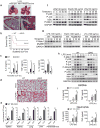
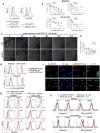
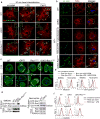
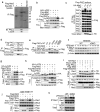
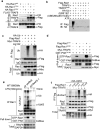
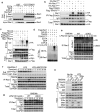
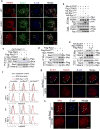

Comment in
-
De-Mst-ifying microbicidal killing.Nat Immunol. 2015 Nov;16(11):1107-8. doi: 10.1038/ni.3291. Nat Immunol. 2015. PMID: 26482969 No abstract available.
-
Phagocytosis: Mitochondria and phagosomes: better together.Nat Rev Immunol. 2015 Nov;15(11):667. doi: 10.1038/nri3931. Nat Rev Immunol. 2015. PMID: 26494048 No abstract available.
Similar articles
-
TLR signalling augments macrophage bactericidal activity through mitochondrial ROS.Nature. 2011 Apr 28;472(7344):476-80. doi: 10.1038/nature09973. Nature. 2011. PMID: 21525932 Free PMC article.
-
The Hippo kinases control inflammatory Hippo signaling and restrict bacterial infection in phagocytes.mBio. 2024 May 8;15(5):e0342923. doi: 10.1128/mbio.03429-23. Epub 2024 Apr 16. mBio. 2024. PMID: 38624208 Free PMC article.
-
TLR4 signalling via Piezo1 engages and enhances the macrophage mediated host response during bacterial infection.Nat Commun. 2021 Jun 10;12(1):3519. doi: 10.1038/s41467-021-23683-y. Nat Commun. 2021. PMID: 34112781 Free PMC article.
-
Neutrophils to the ROScue: Mechanisms of NADPH Oxidase Activation and Bacterial Resistance.Front Cell Infect Microbiol. 2017 Aug 25;7:373. doi: 10.3389/fcimb.2017.00373. eCollection 2017. Front Cell Infect Microbiol. 2017. PMID: 28890882 Free PMC article. Review.
-
Mitochondrial Reactive Oxygen Species: Double-Edged Weapon in Host Defense and Pathological Inflammation During Infection.Front Immunol. 2020 Aug 14;11:1649. doi: 10.3389/fimmu.2020.01649. eCollection 2020. Front Immunol. 2020. PMID: 32922385 Free PMC article. Review.
Cited by
-
Emerging perspectives on mitochondrial dysfunction and inflammation in Alzheimer's disease.BMB Rep. 2020 Jan;53(1):35-46. doi: 10.5483/BMBRep.2020.53.1.274. BMB Rep. 2020. PMID: 31818363 Free PMC article. Review.
-
Sestrin2 inhibits YAP activation and negatively regulates corneal epithelial cell proliferation.Exp Mol Med. 2020 Jun;52(6):951-962. doi: 10.1038/s12276-020-0446-5. Epub 2020 Jun 12. Exp Mol Med. 2020. PMID: 32528056 Free PMC article.
-
Hippo dictates signaling for cellular homeostasis and immune defense in Crassostrea hongkongensis hemocytes.Front Immunol. 2023 Apr 24;14:1173796. doi: 10.3389/fimmu.2023.1173796. eCollection 2023. Front Immunol. 2023. PMID: 37168852 Free PMC article.
-
Mycobacterium tuberculosis-triggered Hippo pathway orchestrates CXCL1/2 expression to modulate host immune responses.Sci Rep. 2016 Nov 24;6:37695. doi: 10.1038/srep37695. Sci Rep. 2016. PMID: 27883091 Free PMC article.
-
Mitochondrial Regulation of Microglial Immunometabolism in Alzheimer's Disease.Front Immunol. 2021 Feb 25;12:624538. doi: 10.3389/fimmu.2021.624538. eCollection 2021. Front Immunol. 2021. PMID: 33717134 Free PMC article. Review.
References
-
- West AP, Koblansky AA, Ghosh S. Recognition and signaling by toll-like receptors. Annual review of cell and developmental biology. 2006;22:409–437. - PubMed
-
- Beutler B, et al. Genetic analysis of host resistance: Toll-like receptor signaling and immunity at large. Annual review of immunology. 2006;24:353–389. - PubMed
-
- Lambeth JD. NOX enzymes and the biology of reactive oxygen. Nature reviews Immunology. 2004;4:181–189. - PubMed
-
- Bedard K, Krause KH. The NOX family of ROS-generating NADPH oxidases: physiology and pathophysiology. Physiological reviews. 2007;87:245–313. - PubMed
-
- Bokoch GM, Diebold BA. Current molecular models for NADPH oxidase regulation by Rac GTPase. Blood. 2002;100:2692–2696. - PubMed
Publication types
MeSH terms
Substances
Grants and funding
LinkOut - more resources
Full Text Sources
Other Literature Sources
Molecular Biology Databases
Research Materials
Miscellaneous

